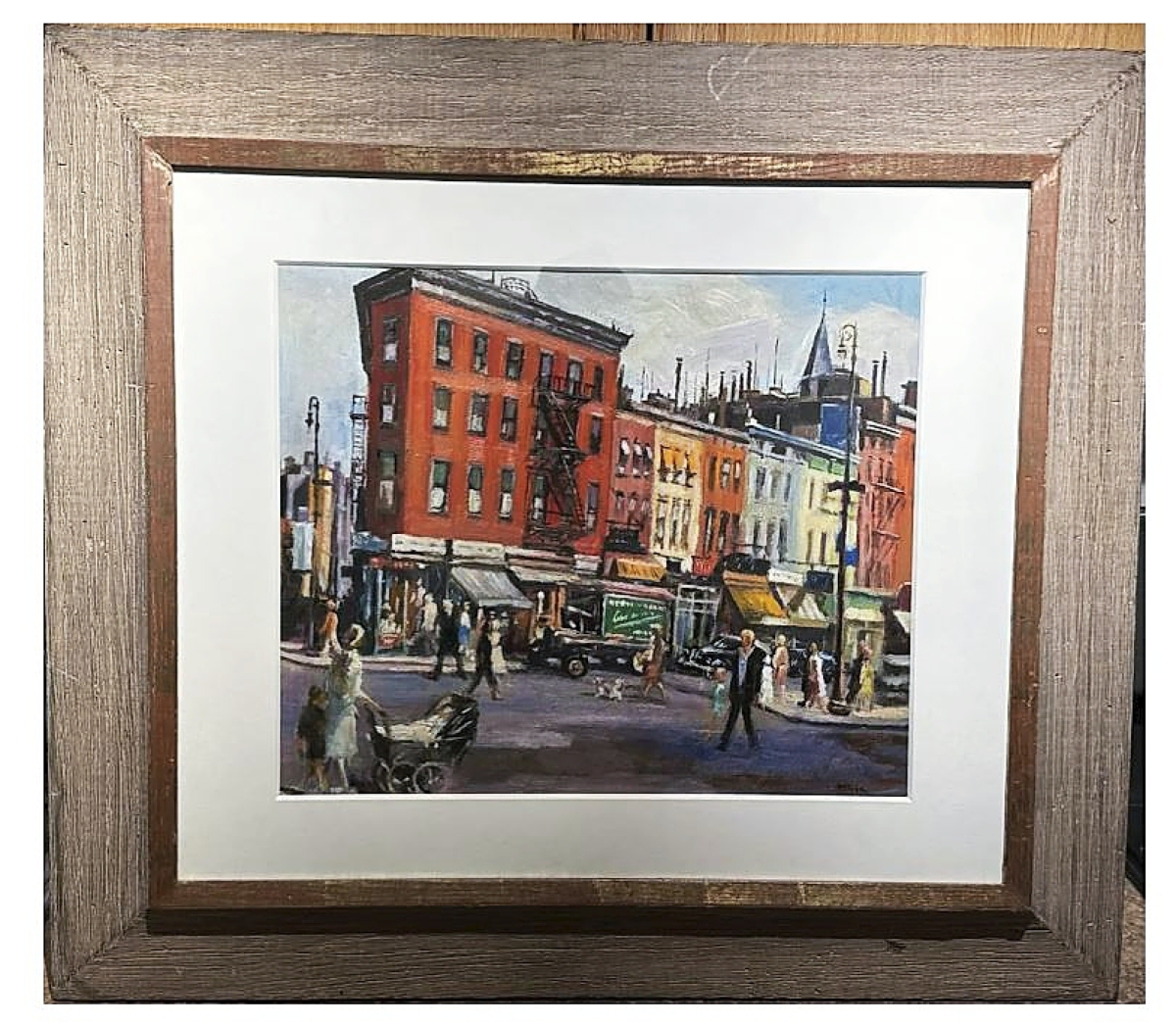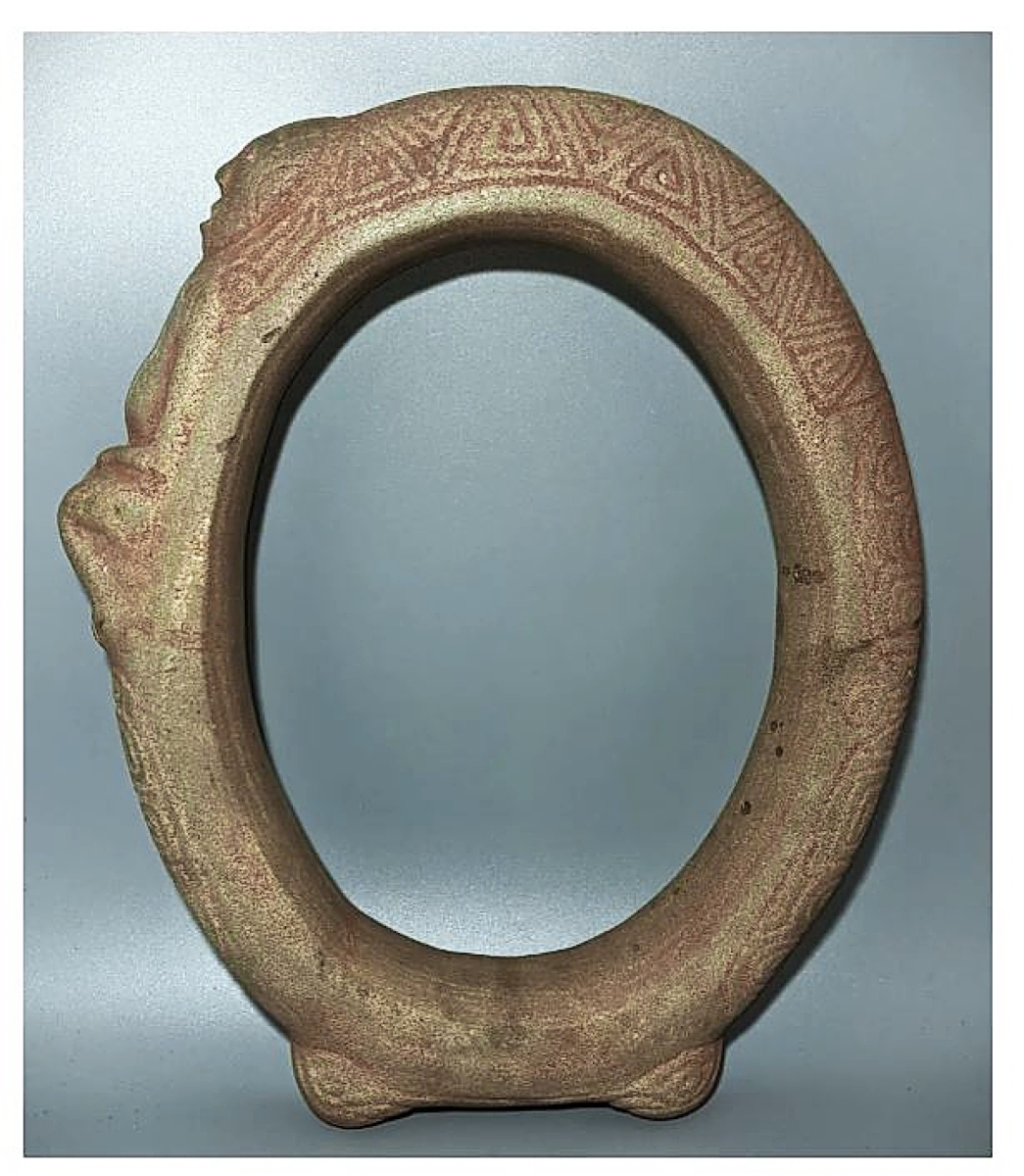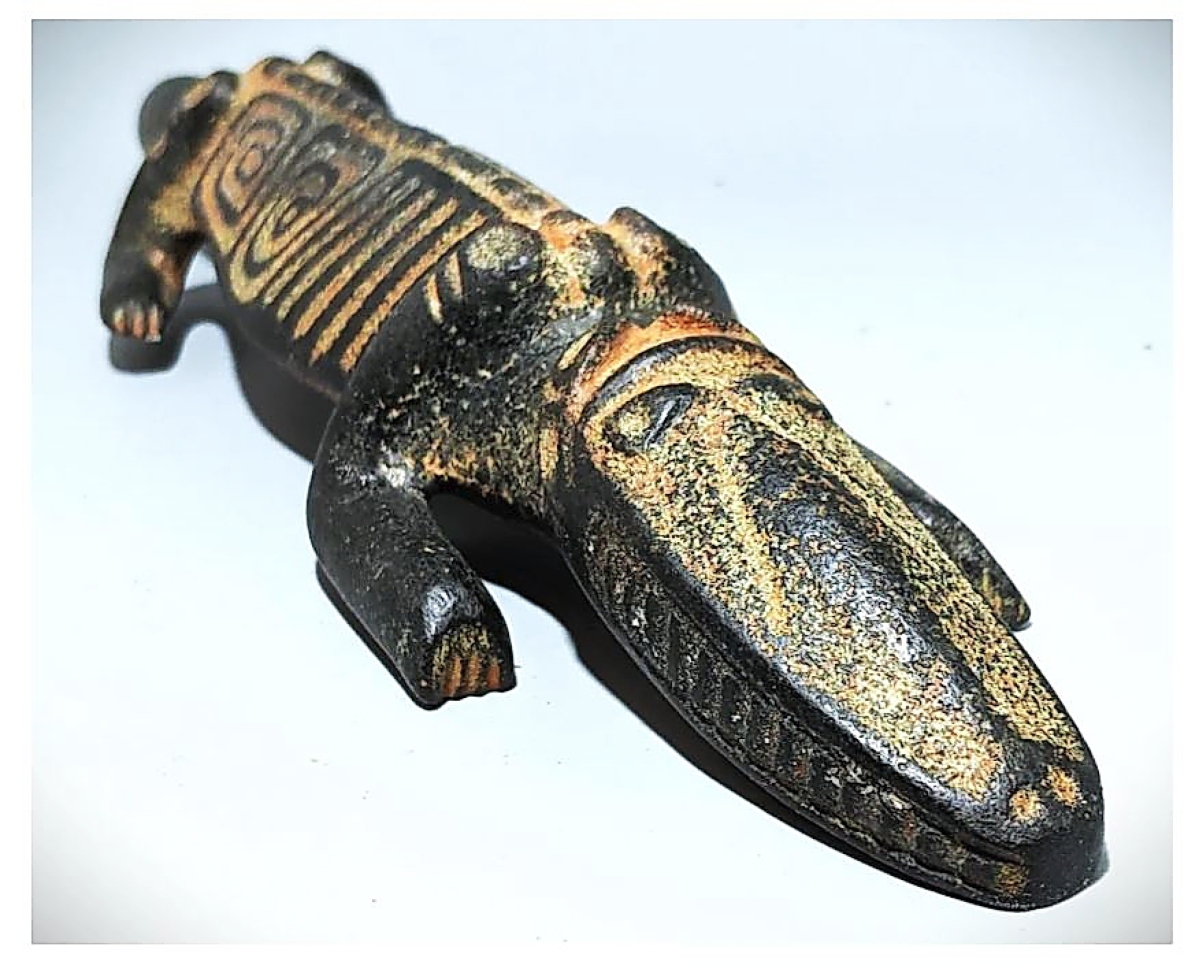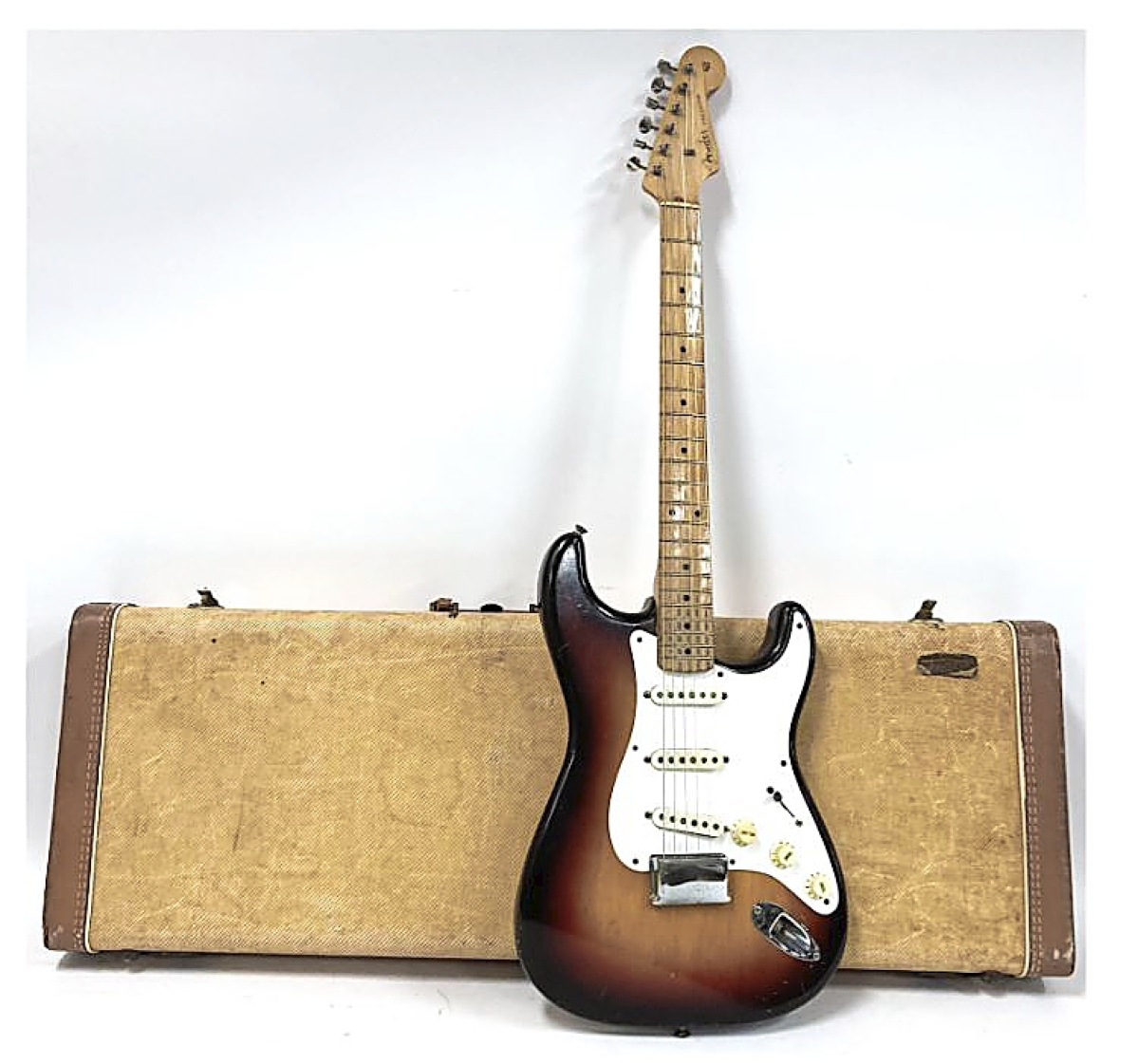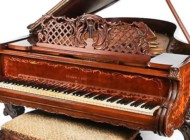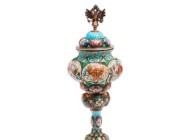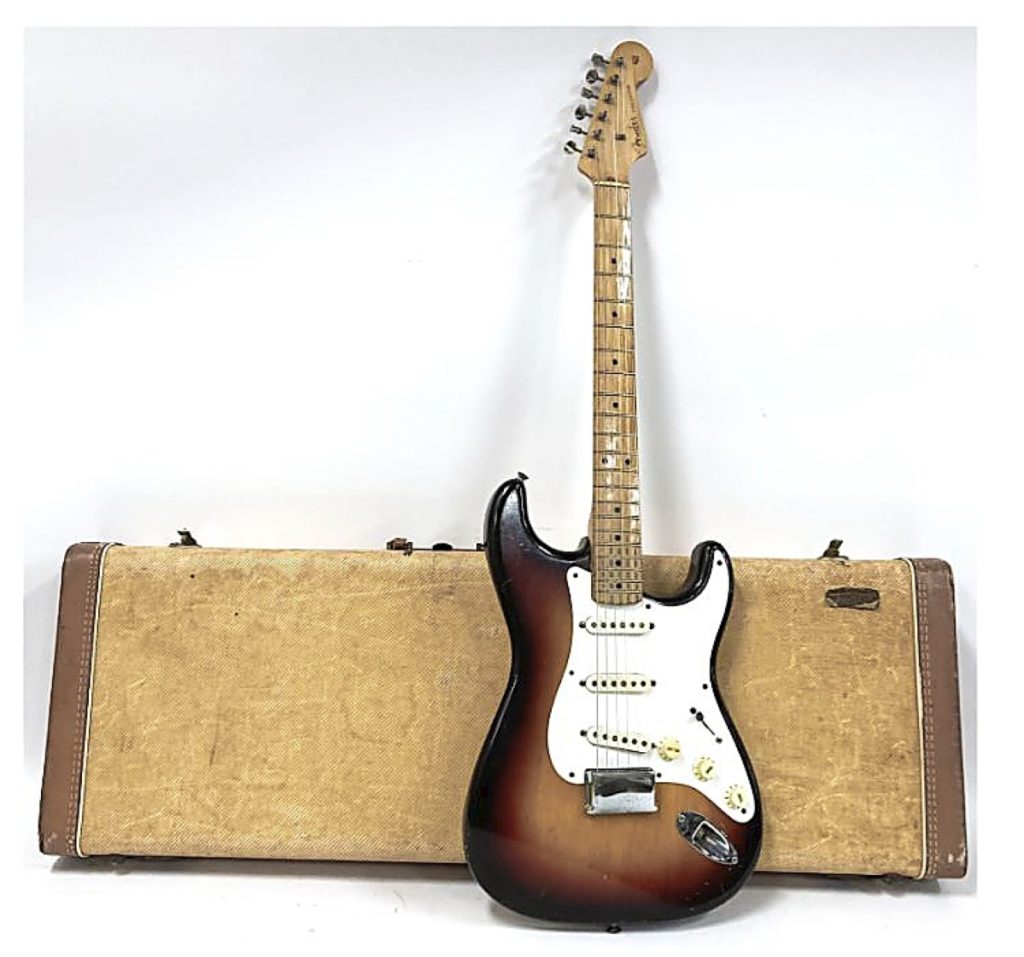
Can you still rock and roll at 92? The consignor of this rare 1958 Fender Stratocaster electric guitar thought not and the guitar and its original case, a one-owner instrument, went out at $32,500. Everything on this double cutaway alder body guitar with three-tone sunburst finish was consistent with it being originally assembled in 1958. The top lot in the sale, it was won by a specialist in guitar sales in New England.
Review by W.A. Demers, Photos Courtesy Mid-Hudson Auction Gallery
NEW WINDSOR, N.Y. – A collection of antique sterling silver, works of art, bronzes, jewelry and musical instruments, including a rare 1958 Fender Stratocaster electric guitar, greeted bidders logging on to Mid-Hudson Auction Galleries’ February 18 sale. The firm’s president Joanne Grant was watching presale interest keenly mount and seesaw between the Fender and an enigmatic oil on Masonite by Gertrude Abercrombie (American, 1909-1977). In the end, the guitar won the day, going out at $32,500, won by a specialist in guitar sales in New England. It was a rare opportunity to own a one-owner guitar. With serial number 28939 die stamped on its metal neck attachment plate and neck date 8-58 handwritten on the heel end and body, everything was consistent with this guitar being originally assembled in 1958. The double cutaway alder body featured a three-tone sunburst finish and came with its original case.
An enigmatic interior scene featuring an owl, cat and horse by Gertrude Abercrombie (American, 1909-1977) realized $21,250. Based in Chicago and inspired by the European Surrealism movement, Abercrombie was acclaimed for her complex self-portraits and enigmatic paintings of stark interiors and illusory landscapes. She was called “the queen of the bohemian artists,” involved in the Chicago jazz scene and friends with musicians, such as Dizzy Gillespie, Charlie Parker and Sarah Vaughan, whose music inspired her own creative work. This example of her work, an oil on Masonite, 8 by 10 inches, was signed Abercrombie 66. It had been acquired by a previous owner from a private collection in New York City.
More traditional oil paintings were represented by a work after Eugene Boudin, “Along the Coast,” an oil on wood panel housed in a highly ornate carved frame and depicting a coastal scene with ships at harbor and figures in the foreground. Measuring 8 by 10 inches (14 by 16 inches framed), it went out at $1,625. Boudin, one of the first French landscape painters to paint outdoors, specialized in marine settings of the sea and shores.
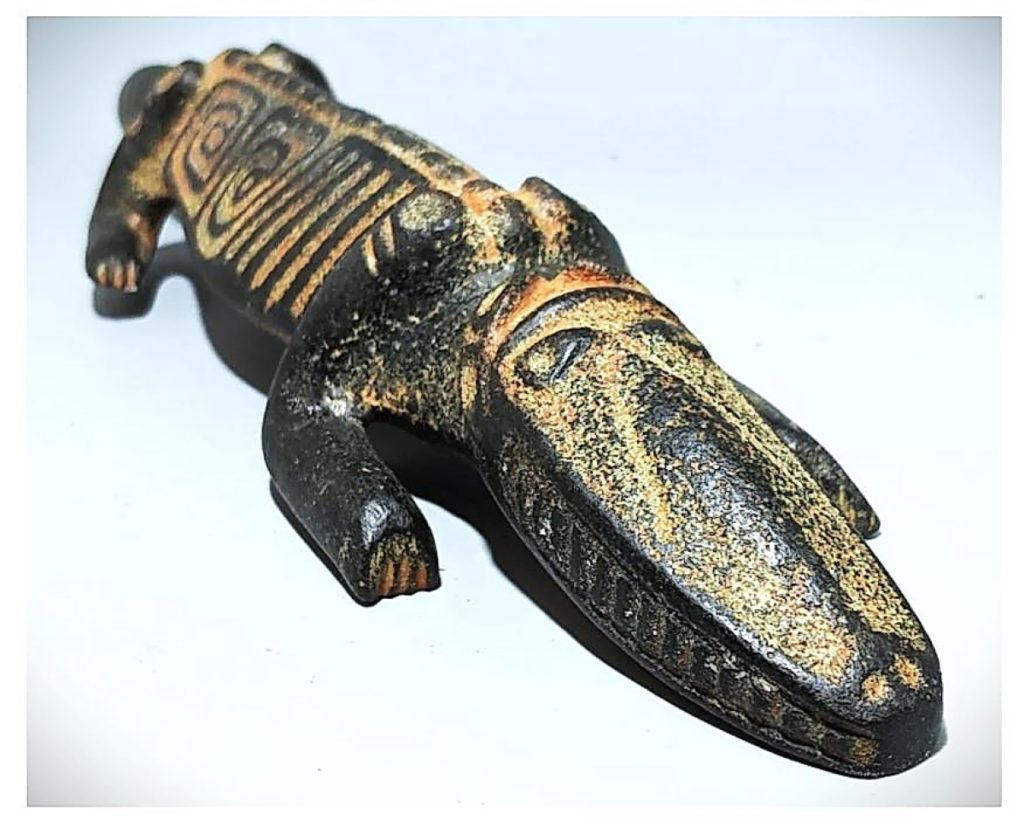
Among the choice examples of Indigenous art in this sale, a Taino ceremonial vomic, 1100-1400 CE, described in the catalog as “one of the finest of any known, in form, size and exotic stone,” performed the best, realizing $2,450. The reptilian form in rich black stone, 14¾ inches long, functioned as a regurgitative tool, a ceremonial practice designed to cleanse the digestive system prior to sniffing up the powdered hallucinogenic cahoba.
From the serenity of a summery coastal day to the bustle of the city, Alfred Mira’s (1900-1981) oil on board New York City street scene left the gallery, also for $1,625. Signed lower right, it was 14 by 18 inches. Mira is known for his realistic, gritty, intimate Greenwich Village street scenes. He studied at the National Academy of Design and at the Art Students League. Fascinated with city streets and their frenetic energy, after traveling throughout Europe in 1928, Mira realized that the bustling avenues of New York afforded him the profound inspiration he was attempting to find in Europe. Returning to New York, Mira devoted himself to painting its streets, avenues and squares.
In the Modernist vein, a Twentieth Century abstract oil by an artist identified as only “Franklin” in the sale catalog, although parenthetically assumed to have been a student of Hans Hoffmann, earned $750. Untitled, the expressionist composition was signed lower right “Franklin,” dated “’63” and measured 60 by 50 inches.
A total of 310 registrants were able to bid on items with three online platforms in use: LiveAuctioneers, BidSpirit and Estate Sales. Lots were 71 percent sold.
There were some choice examples of Indigenous art in this sale by the Taíno, an Arawak people of the Caribbean and Florida. At the time of European contact in the late Fifteenth Century, they were the principal inhabitants of most of Cuba, Jamaica, the Dominican Republic, Haiti and Puerto Rico. Bid to $2,450 was a Taino ceremonial vomic, 1100-1400 CE, described in the catalog as “one of the finest of any known, in form, size and exotic stone.” Finely carved for a high Cacique and likely for the altar of his high priest in ceremonial use, it had a reptilian form in rich black stone and measured 14¾ inches long. Its tail functions as a regurgitative tool, a practice designed to cleanse the digestive system prior to sniffing up the powdered hallucinogenic cahoba.

An enigmatic interior scene by Gertrude Abercrombie realized $21,250. Based in Chicago and inspired by the European Surrealism movement, Abercrombie was acclaimed for her complex self-portraits and enigmatic paintings of stark interiors and illusory landscapes. This example of her work, an oil on Masonite, 8 by 10 inches, was signed Abercrombie 66. It had been acquired by a previous owner from a private collection in New York City.
Taino ballgames would have utilized another choice object in this sale. It was a yoke, believed to be an over-the-shoulder handicap or penalty in execution of the ballgames.
Fetching $3,125, early example, circa 1000-1200 CE, was carved allover and with a full-bodied relief of a humanoid/Zemi and a pair of owl head nodules in pale green stone. Of museum rarity and quality, the large and substantial oval form measured 15½ by 12½ inches across to 3 inches deep.
Rounding out the sale’s top highlights, a Panero automatic man’s wristwatch with its original brown leather band turned in a surprising $1,063 against its $200/300 estimate.
Prices given include the buyer’s premium as stated by the auction house.
The next sale is scheduled for March 25. For information, 914-882-7356 or www.midhudsongalleries.com.


